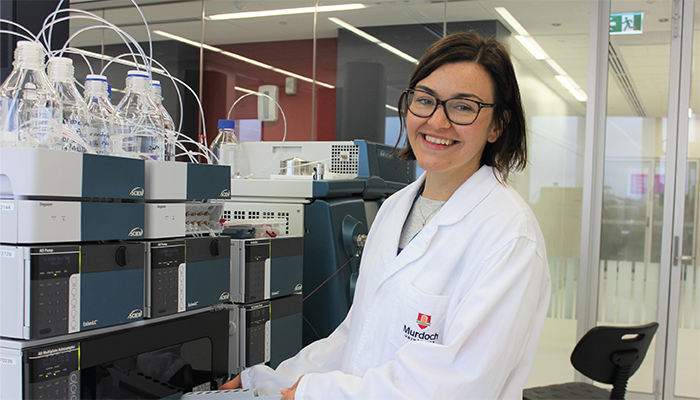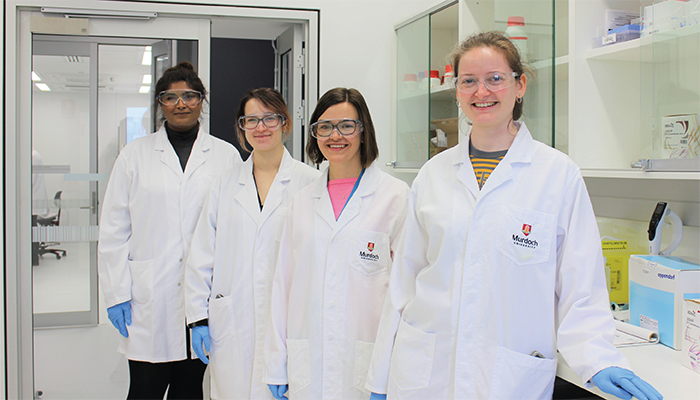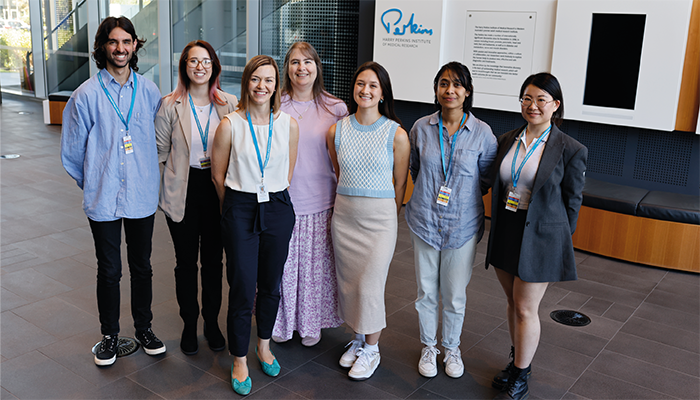International Mass Spectrometry Conference (IMSC) 2024 is set to take place in Melbourne, Australia, on August 17–23, 2024. In the lead-up to the show, we’ll be chatting with some of the organizers and expert speakers to find out more about their research passions, what they’re most looking forward to at the show, and why you should seriously consider making the trip “Down Under.”
Here, we speak with Nicola Gray, IMSC Local Organising Committee member and Senior Lecturer at the Centre for Computational and Systems Medicine, Health Futures Institute, Murdoch University, Australia. Nicola discusses her work in phenomics – and why she’s excited for IMSC.

What gets you out of bed in the morning?
My main research interests are in the application of analytical techniques, specifically liquid chromatography-mass spectrometry, in metabolite phenotyping to elucidate molecular changes that correlate with health outcomes. My research goals are to develop and apply novel mass spectrometry-based approaches to investigate metabolism and characterize metabolic signatures of disease. I love problem solving and exploring new ways to overcome challenges, and by advancing our analytical approaches I am driven to enhance our understanding of the mechanisms of disease development and risk leading to prevention, better detection or stratification of treatment for improved health outcomes. I am passionate about education in analytical science and preparing our next generation of scientists to continue innovating to solve global health challenges, and have the privilege of supervising and mentoring a number of PhD candidates.
Could you give me a short introduction to phenomics?
Phenomics studies the complex interplay between our genetics, environment and lifestyle in disease development and progression by studying our biochemical fingerprints. Phenomics helps us understand the intricate metabolite perturbations and pathways in disease pathophysiology, providing opportunities for more accurate and earlier disease modeling, enhancing diagnosis and prognosis predictions leading to improved treatment options for precision medicine. I started working in this area of science following my PhD in anti-doping testing at King’s College London, when the London 2012 Olympic Games testing facility was repurposed and became the National Phenome Centre in London. I also worked for Waters Corporation based at Imperial College London where I worked alongside academic research teams to establish liquid chromatography-mass spectrometry assays for phenomics applications in health and disease. The accurate annotation and measurement of metabolites is crucial to the interpretation of data and biological conclusions, so fundamental to phenomics is reliable, robust and sensitive analytical equipment, of which mass spectrometry is a key technique.

What are some of the main barriers we need to overcome to facilitate further breakthroughs in phenomics?
One of the most challenging aspects of phenomics is confirmation of biomarker identity. Accurate metabolite identification is essential in understanding the biological changes in a system, and is critical to the translation of candidate biomarkers into clinical utility. There are also major challenges associated with processing large datasets, often comprising thousands of samples each with hundreds to thousands of measurements. The sensitivity, speed and stability of instrumentation are now so advanced that we can collect huge volumes of data very quickly. Another barrier we face is in harmonization strategies to enable the integration of data collected over time across and research groups. There are now a number of community-led initiatives in phenomics which contribute to ensuring that data produced are reliable and comparable to facilitate biomarker verification and ultimately advance its impact on science and medicine.
Why did you decide to help with IMSC this year?
It’s so exciting to be hosting the biggest international mass spectrometry conference in Australia, and I wanted the opportunity to help promote mass spectrometry in Australia. I am located in Perth (which can be a little isolated!) so serving on the local organizing committee has enabled me to represent Western Australia. Through the committee, I have had the fortune of working with a vibrant team of national domain leaders and contributing to a fantastic program showcasing the latest advancements in mass spectrometry.
What are some of the biggest trends or developments in mass spectrometry in 2024 – and how are those topics reflected in the conference program?
Some of the biggest trends I see in mass spectrometry are sustainability and diversity and inclusion, which are reflected in all aspects of the conference program. These themes are crucial for continued advancement of the field. As an active member of the Females in Mass Spectrometry (FeMS+) initiative, the prioritization of a diverse program of speakers, short course leaders and workshop organizers is particularly fantastic to see. FeMS+ is a community-led initiative to support women in the field of mass spectrometry, and will have a big presence at the conference so please come and say hello!
What are you most looking forward to at IMSC 2024?
There are so many aspects of the conference I’m looking forward to, obviously the scientific content with talks from a number of prominent mass spectrometrists, I am chairing a Metabolomics session with a great lineup of speakers covering diverse topics, and the evening workshops which I’ve been co-organizing. But what I am looking forward to the most is connecting with the international mass spectrometry community, seeing previous colleagues and friends that I have not seen in a very long time, and meeting people I have only interacted with on Teams.
Having moved to Perth from the UK in 2019, opportunities for travel were restricted through the COVID-19 pandemic, so I am really excited to engage with the community in-person again.
Will you be speaking at the conference? If so, what will you cover?
I will be speaking at the conference. I have a talk in the Clinical Omics session and will be sharing some exciting research on early lipid signatures that indicate the development of future bronchiectasis in children with cystic fibrosis. This is part of a large national project I have been working on for a number of years at the Australian National Phenome Centre in collaboration with Telethon Kids Institute, Murdoch Children’s Hospital and collaborators at University of North Carolina and Emory University.
How would you characterize the strength of the region’s mass spectrometry community?
Asia and Australasia have great strengths in mass spectrometry, contributing to advancements in the field with applications spanning health, food and agriculture and environment, but are often not as well represented as researchers from other regions. In education, universities in Australia offer specialized courses and training programs in mass spectrometry, preparing the next generation of scientists and researchers which are essential for maintaining the high standards of research and innovation in the field.
Are there any particular challenges researchers outside of Europe and the US face?
For me one of the challenges is the distance between hubs so sharing knowledge and collaborating becomes challenging. Within Australasia, we have a number of key professional organizations, such as the Australian and New Zealand Society for Mass Spectrometry (ANZSMS) and the Australian and New Zealand Metabolomics Society (ANZMS), of which I am the Vice-President, that bring together scientists and researchers to promote knowledge exchange and collaboration. We are actually hosting a joint meeting in Cairns in May 2025, AUSoMicS, bringing together four societies – ANZSMS, ANZMetSoc, the Australasian Proteomics Society and the Australian Glycoscience Society. Yet, it remains challenging to network with the great distances between research hubs.
Any tips for visitors?
Melbourne is a vibrant and cultural city, and the conference center is an impressive facility located close to the CBD on the banks of the Yarra River. I will be staying a few extra days in Victoria and will be visiting Mount Buller for a taste of the Alpine-like snow resort.
What’s your favorite thing about Melbourne?
I’m excited to be visiting Melbourne again, having only been once before when I was traveling Australia as a student over 15 years ago, but the coffee, trams, MCG and Great Ocean Road (plus the rain!) are key memories.

Image Credit: Supplied by Interviewee




